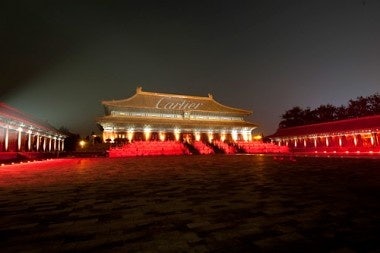Major Brands Hiring Mandarin-Speaking Sales Staff, Increasing Chinese Signage#

China is one of Cartier's top global markets (Image: Cartier)
One of the more interesting features about Cartier's new store in Madrid has nothing to do with its design or inventory, but rather its Mandarin-speaking staff. According to Spain's largest Chinese-language newspaper Ouhua, in order to better serve the increasing number of mainland Chinese tourist-shoppers that are heading to Madrid every year, the new Cartier boutique is aggressively hiring Mandarin-speaking salespeople and increasing its Chinese-language signage.
Speaking to a Spanish-born, ethnic Chinese staff member, Nico Wan Daying, Ouhua noted that European luxury brands, which now count Chinese tourist-shoppers among their most important customers, look for employees who understand brand history and pedigree as well as Chinese buying behavior and psychology.
As Olivier Gay, general manager of Cartier Spain, said this week, the rising importance of the Chinese luxury market, and growing spending power of Chinese consumers, has made Chinese spenders "the major consumer base" in the global luxury sector. When in the planning stages for new stores, Olivier said, Cartier now considers how best to cater to Chinese shoppers, which is a major factor in the priority the company now places on hiring bilingual sales staff. This is part of a greater trend that we've seen gaining strength throughout major luxury markets like France, the UK, North America and Japan in the last decade, with major retailers in New York, Paris and Tokyo increasingly putting a premium on Mandarin-speaking staff as Taiwanese, then mainland Chinese, tourist-shoppers started to supplant the Japanese and Korean travelers who preceded them.
Cartier's new store in Madrid is only the latest example of a business in Spain looking to court the Chinese, but it reflects the expanding business relationship between the two countries. Earlier this month, the FT reported that the Chinese airline and logistics group HNA paid €432 million (US$620 million) for a 20 percent stake in Spain’s NH Hoteles. The new strategic partnership aims at setting up a joint venture to develop hotels in China.
As for Cartier, it's not hard to see why the company is trying harder to appeal to Chinese tourist-shoppers. The brand now operates boutiques in 41 first- and second-tier Chinese cities, and as Jing Daily wrote last year, Cartier plans to double its Chinese boutiques within the next four to five years. Considering some of China's wealthier luxury consumers, who often prefer to do the bulk of their high-end shopping in Europe or Hong Kong to avoid China's stiff and controversial luxury taxes, view local luxury boutiques more as "showrooms" than anything, Cartier's moves to accommodate outbound Chinese travelers are a smart move. With Chinese tourists expected to become the world's second-largest market by 2020, the once-dominant Japanese tourist-shoppers expected to cut back on overseas travel this year in the wake of that country's devastating earthquake, Chinese tourists may be the luxury industry's "cash cow" in the years ahead. Brands that move fast now to cater to this group will undoubtedly benefit in the years ahead.